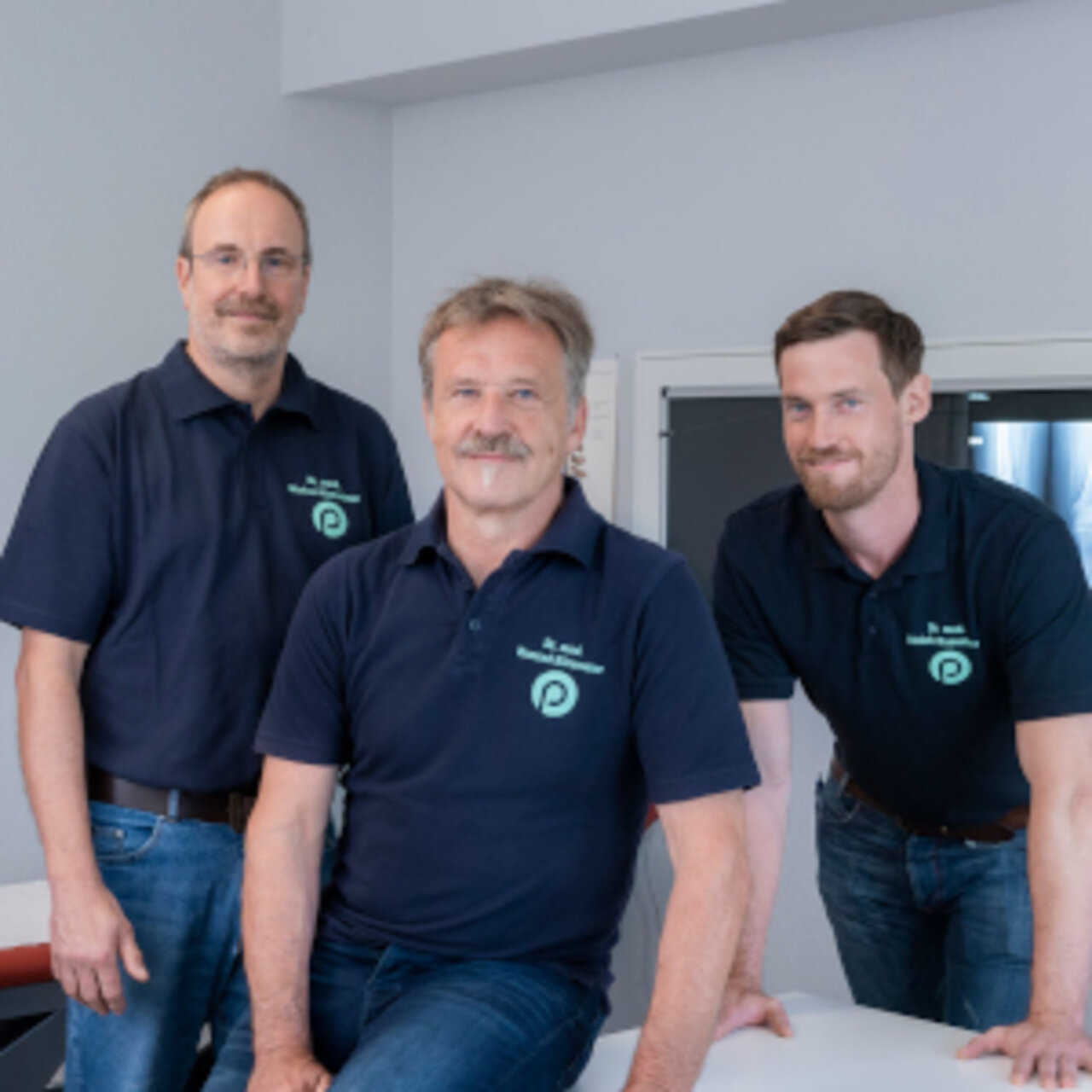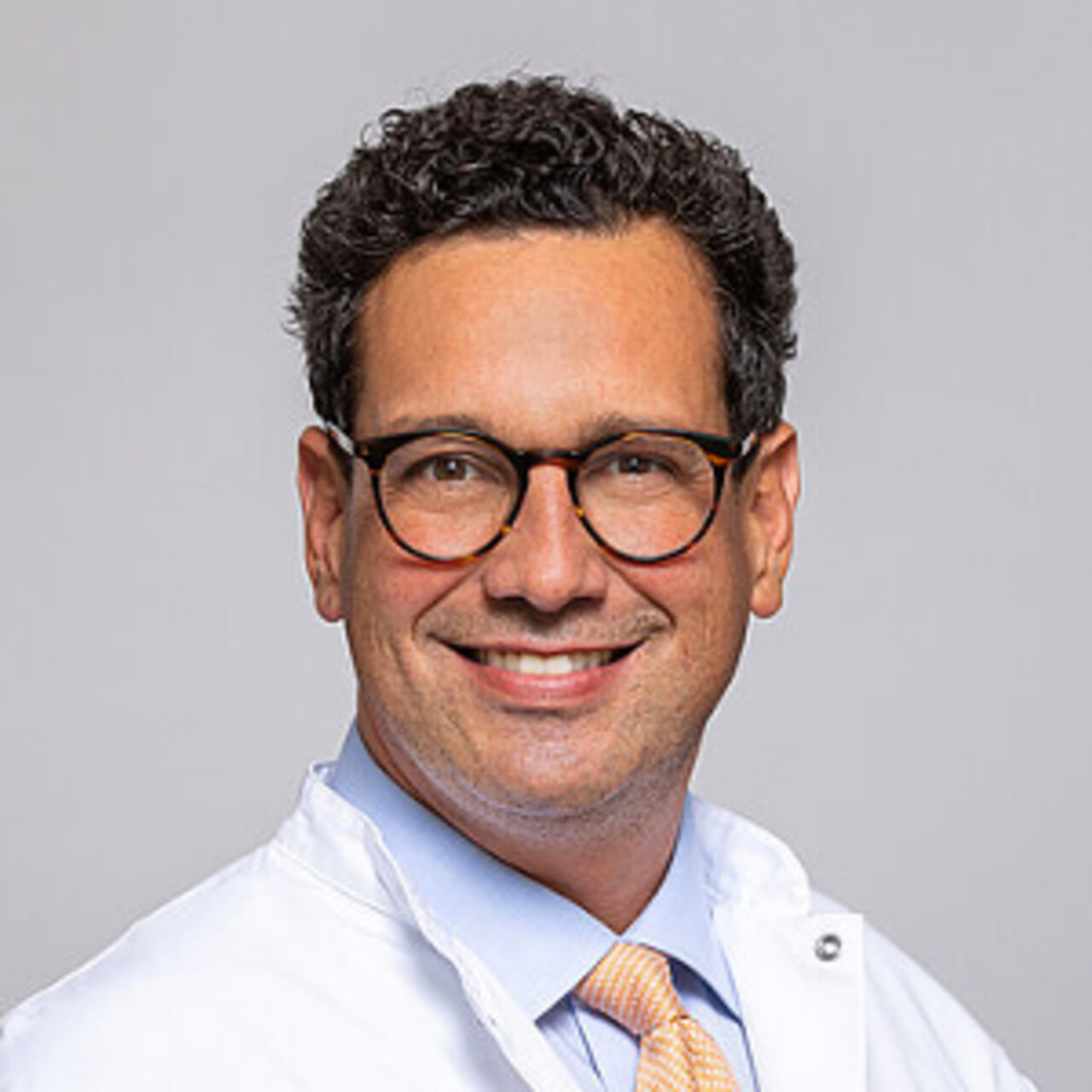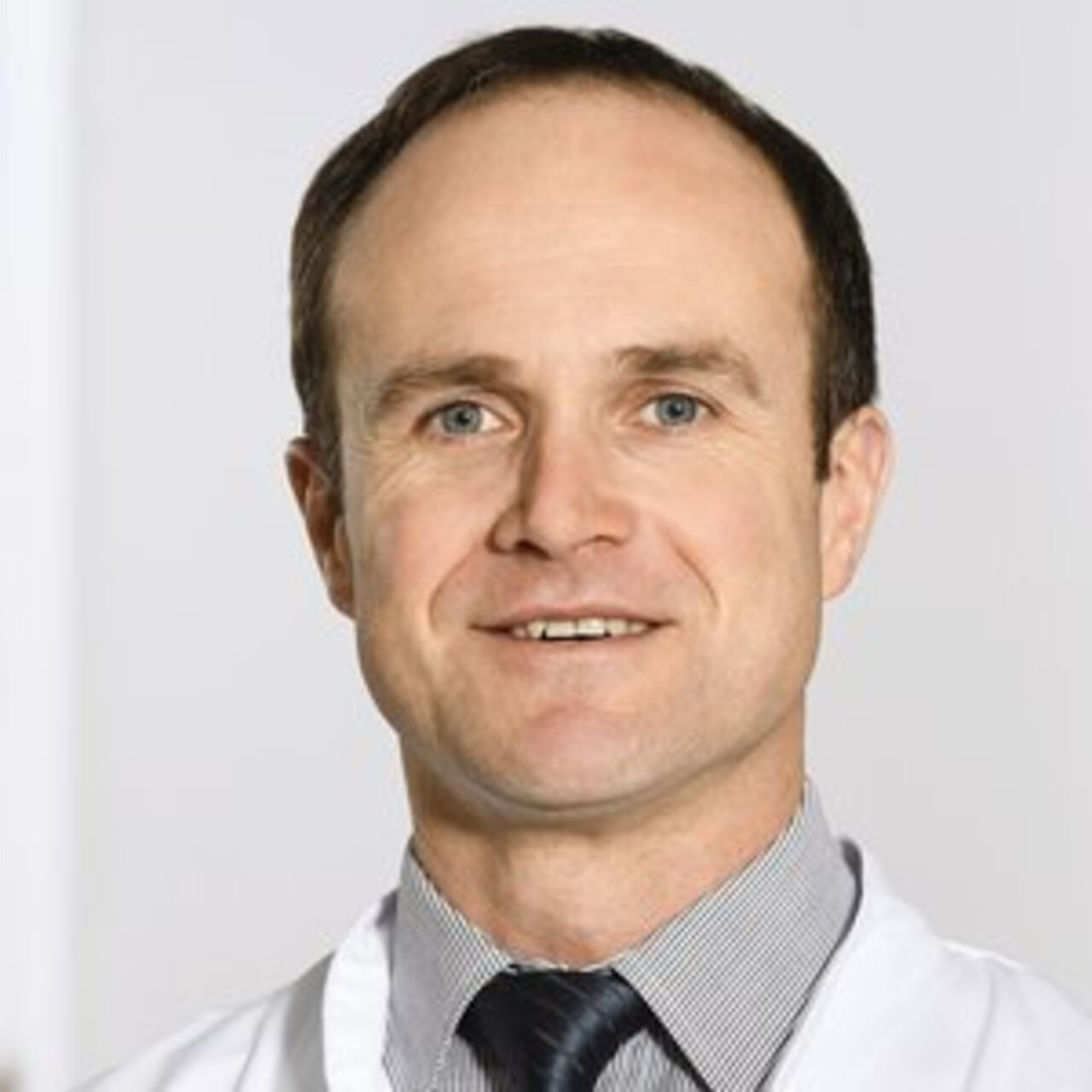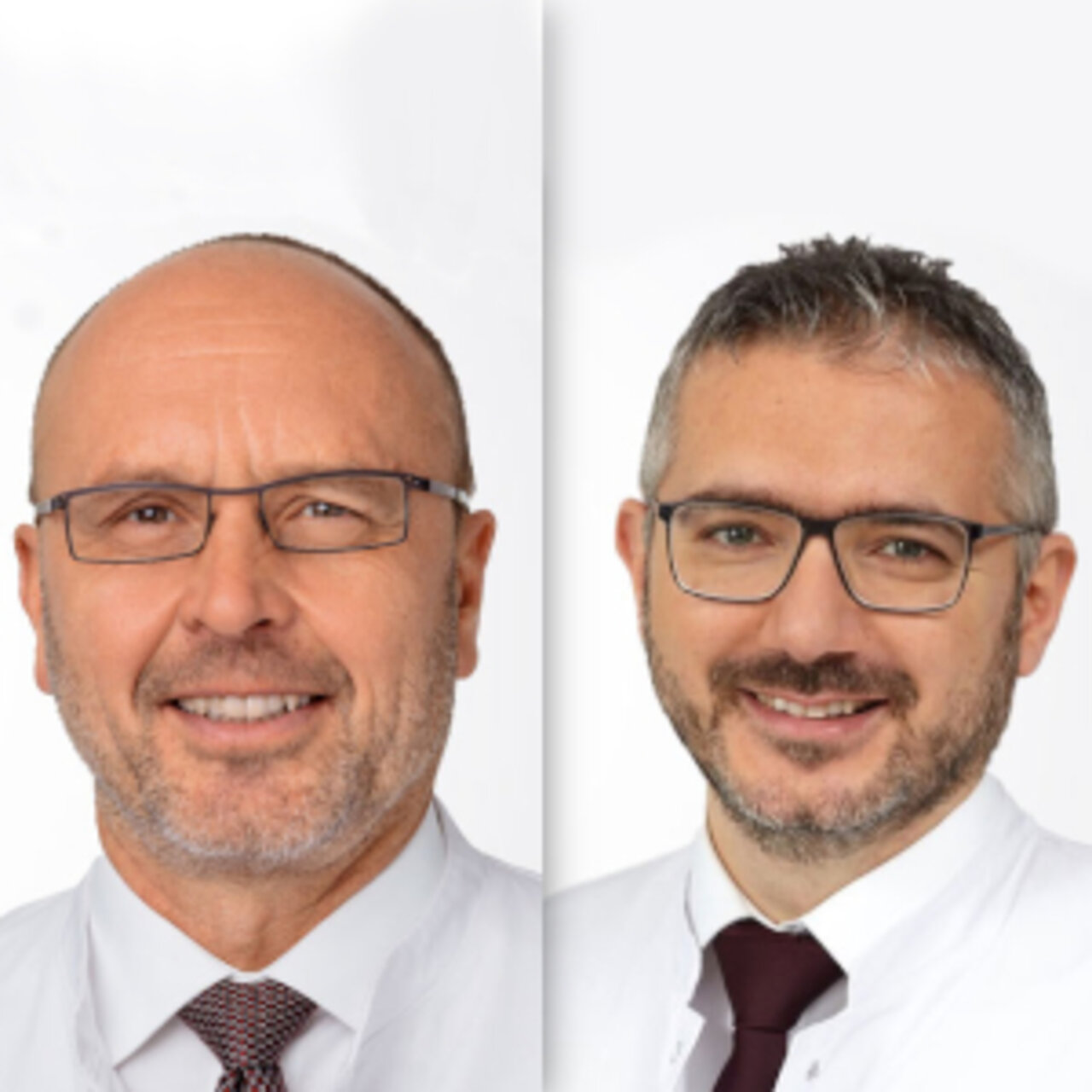Specialists in Hip Surgery
13 Specialists found
Information About the Field of Hip Surgery
Anatomy of the Hip
The hip, or more precisely the hip joint, forms the connection from the trunk to the legs and consists of two bony structures. One is the massive pelvic bone, which contains the so-called acetabulum. However, this socket is not, as one might assume from the expression, flat. It can be imagined more like the imprint of a hemisphere. The thigh bone (femur) sits in this cavity, and it is also called the femoral head, which is connected to the rest of the large thigh bone via the so-called neck.
The head and neck are at a certain angle (CCD angle) to the rest of the thigh bone, generally between 120° and 140° (depending on age). Because of this angle, the femoral head can fit into the slightly anterior and posterior socket. Due to the large bony contact surface, i.e., the femoral head is primarily enclosed by the acetabulum, it is also known anatomically as a cotyloid joint. The surfaces of the two bones are covered with cartilage in the joint, which enables low-friction movement.
The joint is further stabilized by a connective tissue joint lip (labrum) resting on the edge of the acetabulum and a tight ligamentous apparatus that leads from the pelvic bone to the femur and thus encloses the joint.
Which Diseases Cause Hip Pain?
Various diseases can lead to hip pain. For example, even in children, hip problems can occur due to incorrect positioning (hip joint dysplasia), which, if left untreated, can lead to functional limitations and pain. An example of this would be an insufficiently formed acetabulum. However, since newborns in Germany are examined for this and are usually not treatable by surgery, this is not the leading cause of hip pain.
Of course, pain can also be caused by broken bones in the hip area. The most important of these is the fracture of the femoral neck, which can occur when falling on the hip, especially in older adults.
Arthritis (acute joint inflammation) of the hip can also cause severe pain. Bacteria can cause this inflammation (e.g., after surgery) or autoimmune (e.g., rheumatoid arthritis).
In the case of hip joint dysplasia and a fracture or inflammation, joint wear and tear can occur in the long term (osteoarthritis) if adequate therapy is not carried out or impossible.
With osteoarthritis, the cartilaginous coating of the joint surface is destroyed bit by bit, so that movement is associated with more friction and thus pain. Osteoarthritis of the hip can occur even without the causes as mentioned above. The wear and tear of the cartilage is favored by overweight. Hip joint osteoarthritis (coxarthrosis) is a widespread disease that occurs mainly in old age. In extreme cases, it can make surgery necessary.
Hip Surgery: An Outline of the Most Important Hip Surgeries
In Germany, hip surgeries represent a large proportion of joint surgeries. In 2016 alone, 233,000 hip endoprostheses were implanted. Hip joint osteoarthritis results in wear and tear of the joint cartilage, which causes patients to suffer from frequent pain and movement problems.
Besides joint replacement, there are also possibilities of joint-preserving minimally invasive arthroscopic surgery (arthroscopy with keyhole surgery).
Hip Surface Replacement
Hip surface replacement, according to McMinn, is an alternative to total joint replacement. With this method, only the part of the joint affected by osteoarthritis is removed or replaced, and the surgery is relatively bone-sparing. Like a dental crown, the joint surfaces of the femoral head and acetabulum are covered or replaced with a metal implant. Advantages compared to conventional total endoprostheses are that a shorter rehabilitation period and return to the daily routine is achieved. A very natural joint position of the patient can be created., which results in a better range of motion and a better feeling of movement for the patient.
This surgery is more likely to be used in younger osteoarthritis patients (younger than approximately 65 years) with a still stable femoral neck, who have pain when walking and moving and want to return to a mobile life. Due to the bone-sparing procedure, a conventional hip endoprosthesis can also be used in wear and tear. The disadvantage of this method is that long-term results (more than 20 years) are not yet available.
Hip Endoprosthesis
The classic hip endoprosthesis is by far the most frequently carried out surgery on the hip joint. If patients suffer from coxarthrosis (hip joint osteoarthritis), in addition to pain when moving, the joint stiffens, and mobility is reduced. There are various implants and methods of replacing the socket of the pelvic bone (acetabulum) and the head of the femur (femoral head).
Studies have shown excellent long-term results regarding the durability of the prostheses (approx. 20 years) and advantages for patients in terms of improving pain and quality of life.
The implants can be placed either conventionally, via a relatively large incision with more significant soft tissue damage, and under the surgeon's excellent visibility into the joint, or minimally invasive and tissue-sparing, into the joint.
In contrast to hip surface replacement, where the bone tissue is operated on very sparingly, the entire femoral head is replaced with a metal or ceramic implant in an endoprosthesis case. The femoral neck is placed through a long shaft into the femur where it is either fixed or cemented in place by bone healing. When replacing the acetabulum, more bone tissue is removed and then anchored in the pelvic bone, less often cemented.
Hip Prosthesis Revision
A hip prosthesis revision surgerycan have various causes. The most common are:
- Wear of the sliding surfaces of the implants (prosthesis older than 20 years)
- Periprosthetic fracture (bone fracture in the area of the prosthesis)
- Bone loss with prosthesis loosening
- Infection of the endoprosthesis
- Incorrect placement of the prosthesis
If patients experience symptoms such as pain in the groin, hip or thigh area, or changes in leg length or a feeling of instability after a hip endoprosthesis has been fitted, this should be clarified by a doctor.
A hip prosthesis revision should be carried out by an experienced surgeon, as this is not a simple standard surgery. Depending on the cause of the patient's symptoms, the individual fitting of the prosthesis is revised.
Hip Arthroscopy
Hip arthroscopy is an arthroscopy of the hip joint. In this procedure, minimally invasive, i.e., keyhole surgery, is performed through small skin incisions. The surgeon places a camera and his surgical instruments into the joint and can then carry out the surgery with very little damage to the soft tissue and small scars. In addition to the removal of loose joint bodies, inflamed mucous membrane, or disturbing connective tissue parts, surgeries can also be carried out in cartilage or bone tissue.
Which Doctors and Clinics Are Hip Specialists in Germany, Switzerland, and Austria?
The doctors who treat hip problems are specialists for orthopedics and trauma surgery. Some clinics specialize in such problems. It is best to ask your general practitioner or treating orthopedist to find such a clinic.
We will help you find an expert for your illness. All listed doctors and clinics have been checked by us for their outstanding specialization in hip surgery and are awaiting your inquiry or treatment request.
Sources:
Duale Reihe Orthopädie und Unfallchirurgie; Niethard, Pfeil, Biberthaler; 7. Auflage Thieme Verlag
Prometheus Lernatlas der Anatomie; Schünke, Schulte, Schumacher; 3. Auflage Thieme Verlag












